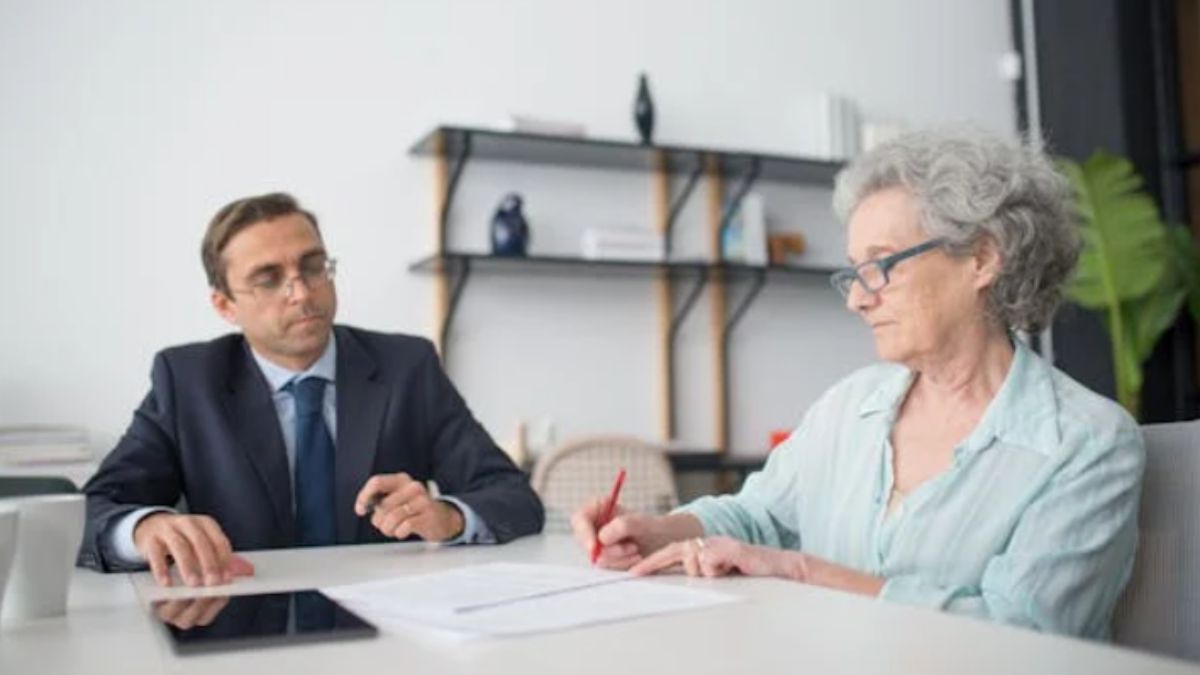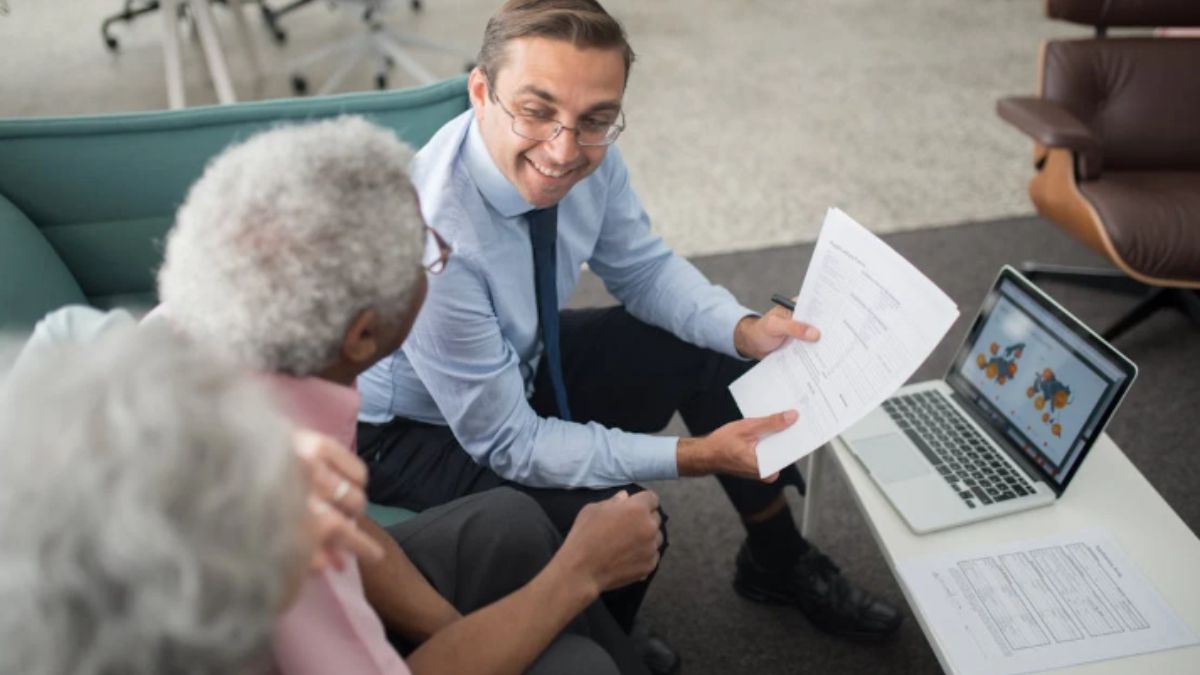INSURANCE
Understanding Pedorthics: What Services Do Professionals Offer?

Introduction
Pedorthics is a specialized field dedicated to assessing, designing, and modifying foot appliances and footwear to alleviate foot and lower limb concerns. For those seeking to enhance their foot health or address foot-related discomforts, understanding the services offered by pedorthic professionals is crucial. Whether you’re dealing with chronic pain, recovering from an injury, or simply seeking professional pedorthic services near you, these experts provide tailored solutions to improve your quality of life significantly.
With a firm foot mechanics and biomechanics foundation, pedorthic services extend beyond merely fitting shoes. These services encompass custom orthotic solutions, therapeutic footwear, and expert advice tailored to enhance foot function and alleviate pain. This comprehensive approach ensures that your feet receive the attention and care necessary to support your activity level and lifestyle.
What is Pedorthics?
At the core of pedorthics is a focus on foot and ankle health through specialized supports and footwear. This branch of healthcare is dedicated to analyzing and understanding the unique structure and needs of an individual’s feet. It involves creating personalized orthotic devices that help redistributing pressure and provide support to alleviate discomfort. Pedorthics combines medical insight with practical solutions to manage foot problems and improve mobility.
Services Offered by Pedorthic Professionals
Custom Orthotic Devices
One primary service provided by pedorthists is the development of custom orthotic devices. These devices are crafted to address specific alignment issues, providing support where needed and correcting imbalances. Custom orthotics can prevent further damage and promote healing by catering to the individual’s unique step pattern. Such customization ensures comfort and effectiveness in managing issues like plantar fasciitis and flat feet.
Therapeutic Footwear
Pedorthic professionals also specialize in therapeutic footwear, designed for those requiring more specialized support due to specific medical conditions. These shoes are comfortable and functional, catering to individuals with diabetes, arthritis, or severe arch problems. The right therapeutic footwear helps reduce pain and prevent complications associated with various foot conditions.
Foot Assessments and Consultations
An essential part of pediatric services is the initial and ongoing assessments done to understand the specific needs of each client. During consultations, pedorthists evaluate foot structure, gait, and movement patterns. Such assessments help formulate a tailored plan that meets personal health goals. Regular check-ups and adjustments ensure your feet’ continued health and improvement, allowing easier management of any developing conditions.
Benefits of Engaging with a Pedorthic Professional
Engaging with a pedorthic professional affords numerous benefits beyond immediate pain relief. Properly fitted orthotics and footwear enhance mobility, reduce discomfort, and prevent future injuries. These benefits are crucial for athletes or those who spend extended periods on their feet. Moreover, addressing foot health proactively can improve overall posture and reduce stress on other body parts.
The cumulative effect of expert guidance and customized interventions significantly improves day-to-day comfort and performance.
Conclusion
Understanding the scope and benefits of pedorthics services empowers individuals to make informed decisions about their foot health. By investing in the expertise of a pedorthic professional, you can adopt a proactive approach toward managing and preventing foot problems. Whether through custom orthotics, therapeutic footwear, or ongoing assessments, these services ensure your feet remain healthy and functional, allowing you to lead an active and comfortable life. With pedorthics, every step you take is towards better health and enhanced mobility.
INSURANCE
Why It’s Risky to Trust the Other Driver’s Insurance Company Without Legal Advice

Why It’s Risky to Trust the Other Driver’s Insurance Company Without Legal Advice
Insurance companies are not neutral parties; they are businesses that prioritize minimizing payouts. After an accident, the other driver’s insurer may seem helpful, contacting you quickly and offering to settle. However, accepting their assistance without professional guidance can put your rights and compensation at serious risk. It’s often in your best interest to first consult with a Fort Collins car accident lawyer before engaging in any conversation with the opposing insurer.
Their Loyalty Lies Elsewhere
Insurance adjusters may act friendly and sympathetic, but their primary goal is to protect the company’s bottom line, not to prioritize your best interest. The other driver’s insurance company is committed to its policyholder and will look for ways to reduce or deny your claim altogether. This conflict of interest becomes especially dangerous if you are recovering from injuries, facing mounting expenses, or unsure of your legal rights.
Without an attorney’s help, you may inadvertently say or do something that the insurer will later use against you. Even a casual statement like “I’m feeling okay” could be twisted to undermine your injury claim. That’s why speaking with an attorney first is essential.
Quick Settlement Offers Can Undermine Your Claim
One common tactic insurers use is offering a fast settlement. At first, this might seem convenient, especially if you’re facing hospital bills or missing work, but these offers are rarely in your favor. Quick settlements are typically calculated to be far lower than what your claim is actually worth.
These early offers often don’t account for future medical expenses, long-term rehabilitation, lost future income, or emotional distress. Once you accept a settlement, you typically forfeit the right to pursue additional compensation, even if new injuries arise later. Consulting an attorney can help you understand the full scope of your damages before agreeing to any deal.
Recorded Statements May Hurt Your Case
Shortly after the accident, the opposing insurance company may ask you to provide a recorded statement. They might claim it’s a routine part of the process or that it’s necessary to move your claim forward. However, providing such a statement without legal guidance is risky.
Insurance companies are skilled at asking questions that may seem harmless but are designed to prompt responses that weaken your case. For example, they may ask you to speculate about the cause of the accident or the extent of your injuries. Any inconsistencies between your recorded statement and future medical evaluations can be used to dispute your credibility.
You Might Not Know the Full Value of Your Claim
Without legal training or experience, it’s difficult to calculate what your claim is truly worth. Several factors contribute to determining fair compensation, including pain and suffering, future medical expenses, property damage, and lost earnings. Most individuals aren’t aware of all the elements that can be included in a claim, and insurance companies use that lack of knowledge to their advantage.
A Fort Collins car accident lawyer can evaluate the details of your accident, estimate the true value of your damages, and negotiate aggressively on your behalf. With their help, you’re more likely to receive a settlement that reflects your actual losses, not just the insurer’s first offer.
Conclusion
Trust the other driver’s insurance company without legal counsel at your own risk, as it may result in lost compensation, missteps, and unnecessary stress. Their loyalty lies with their own insured, not with you. To protect your rights and ensure you receive the full compensation you deserve, it’s wise to speak with a Fort Collins car accident lawyer as early as possible in the claims process.
INSURANCE
Beyond the Fine Print: Understanding How Policyholders Can Detect Signs of Insurance Bad Faith

In a world where insurance plays a pivotal role in safeguarding your financial well-being, understanding the nuances of your policy becomes paramount. Whether looking for a New Mexico insurance bad faith lawyer, this article delves into the complexities of detecting insurance bad faith, a crucial skill for policyholders like you who seek to protect their interests.
Insurance Bad Faith: What Policyholders Need to Know
Insurance bad faith occurs when an insurer violates its obligations under the policy, acting in a manner that’s unjust to the policyholder. When purchasing insurance, you enter into a contract expecting the insurer to act in good faith—a legal duty to deal fairly and honestly.
Key Indicators of Bad Faith
Recognizing insurance bad faith is crucial. Some indicators include:
Unreasonable Delays: If an insurer delays processing a claim without valid reasons, it may be acting in bad faith.
Unjust Denials: Claims turned down without a clear, justified explanation could signal misconduct.
Inadequate Investigation: A superficial examination of claims can also point to bad faith.
Identifying Red Flags: Signs of Bad Faith in Insurance Claims
Delayed Responses and Unnecessary Requests
A standard indicator of bad faith in insurance claims is the delay in communication from the insurer. If you notice prolonged silence or repeated requests for information already provided, it might signal avoidance or stalling tactics. Insurers are expected to process claims promptly; unexplained delays could signify deeper issues.
Questionable Denials and Policy Misinterpretations
Another red flag is a sudden, unexplained denial of your claim or an interpretation of policy terms that seems inconsistent with standard practice. If an insurer provides vague or shifting reasons for denying a claim, these might be attempts to avoid rightful payouts. Reviewing the policy carefully and seeking clarification can help identify any misinterpretations.
Low Settlement Offers
Receiving a settlement offer that seems disproportionately low compared to the claim can also suggest bad faith. Insurers might minimize payouts by undervaluing claims. It’s beneficial to document all losses comprehensively and consider consulting an expert to evaluate the fairness of the offer.
Common Tactics Used by Insurers to Deny Legitimate Claims
Delaying the Claims Process
One tactic often employed by insurance companies is to unnecessarily delay the claims process. By creating prolonged waiting periods, insurers may hope that claimants will become frustrated and either drop the claim or accept a lower settlement offer. These delays can manifest in the form of requesting excessive documentation or repeatedly transferring the claim to different departments.
Misinterpreting Policy Language
Another common strategy involves the deliberate misinterpretation of policy language. Insurers might assert that certain losses are not covered due to ambiguous policy terms. This tactic relies on the complexity of insurance jargon, which can easily confuse policyholders. By challenging these interpretations, you can ensure that your claim receives the fair consideration it deserves.
Undervaluing the Claim
Insurers also frequently undervalue legitimate claims by offering settlements significantly lower than the claim’s worth. They might base these offers on questionable assessments or outdated market values. It’s crucial to have third-party appraisals or other evidence to counter these lowball offers, ensuring you receive a fair settlement.
Legal Recourse: What to Do if You Suspect Bad Faith Practices
Recognize the Signs
Detecting bad faith practices involves awareness of certain red flags in your insurer’s behavior. These may include unexplained delays, denial of valid claims without reasonable justification, or offering insufficient settlement amounts. Understanding these indicators is crucial in taking timely action.
Document Everything
Maintaining detailed records can significantly bolster your position. Keep all correspondence, emails, and notes of phone conversations with your insurer. Document every interaction thoroughly, focusing on dates, times, and the content discussed.
Seek Professional Advice
Consulting with a legal expert specializing in insurance law can be invaluable. They can help decipher complex policy language, determine if your rights have been violated, and guide you on possible remedies, contributing to a more informed decision-making process.
Protecting Yourself: Tips for Policyholders to Avoid Insurance Bad Faith
Know Your Policy
Understanding your insurance policy is crucial. Thoroughly review the document, paying special attention to the terms, conditions, and exclusions. If anything seems unclear, reach out to your insurance agent for clarification. This knowledge empowers you to recognize when your insurer’s actions may contradict the agreement.
Document Everything
Maintain a meticulous record of all communications with your insurer—phone calls, emails, and letters. Documentation can serve as evidence if you suspect bad faith practices, such as undue delay or denial of valid claims.
Be Proactive
Stay informed about your rights as a policyholder. Regularly reviewing state insurance regulations and seeking legal advice when necessary can provide significant leverage. Taking these steps helps ensure fair treatment, safeguarding your coverage and peace of mind.
Final Thoughts
In your journey to safeguard your interests as a policyholder, understanding the nuances of insurance bad faith is imperative. Whether looking for a New Mexico insurance bad faith lawyer, by recognizing the subtle signs—such as unreasonable denial of claims, undue delays, or inadequate investigations—you empower yourself to challenge unjust practices effectively.
INSURANCE
The Standard Fire Insurance Company: Comprehensive Coverage for Your Protection

The Standard Fire Insurance Company has long been a trusted name in safeguarding homes and businesses against fire-related risks. With fires causing billions in damages annually, securing reliable fire insurance is not just a precaution—it’s a necessity. This article explores the company’s offerings, benefits, and how it compares to industry standards, helping you make an informed decision for your property’s safety.
Understanding The Standard Fire Insurance Company
Founded on principles of reliability and customer trust, The Standard Fire Insurance Company specializes in fire and allied perils coverage. Unlike generic insurers, it focuses on mitigating fire risks with tailored policies that address residential, commercial, and industrial needs.
Key Features of Their Policies
Fire Damage Coverage: Protects against structural and content losses due to fires.
Additional Perils: Often includes lightning strikes, explosions, and smoke damage.
Temporary Housing Support: Covers living expenses if your home becomes uninhabitable.
Fast Claims Processing: Streamlined procedures to ensure timely payouts.
Why Choose The Standard Fire Insurance Company?
Selecting the right insurer can mean the difference between swift recovery and financial strain. Here’s why many policyholders prefer The Standard Fire Insurance Company:
1. Financial Stability & Trustworthiness
The company maintains strong financial health, ensuring it can honor claims even during widespread disasters. Industry experts recognize its consistent performance in claim settlements.
2. Customizable Policies
Every property has unique risks. Whether you own a high-rise apartment or a small business, The Standard Fire Insurance Company offers flexible plans that adapt to your needs.
3. Competitive Premiums
Despite its specialized focus, the company provides cost-effective premiums without compromising coverage. Discounts for safety installations (like smoke detectors) further reduce costs.
Comparing The Standard Fire Insurance Company to Industry Standards
To help you evaluate its offerings, here’s a comparison table highlighting five critical features:
| Feature | The Standard Fire Insurance Company | Industry Average |
|---|---|---|
| Cost | Competitive premiums with discounts | Higher for similar coverage |
| Efficiency | Fast, hassle-free claims processing | Often delayed |
| Ease of Use | Simple policy management & renewals | Complex paperwork |
| Scalability | Customizable for all property types | Limited flexibility |
| Additional Benefits | Covers temporary housing & debris removal | Rarely included |
How to Maximize Your Fire Insurance Benefits
Simply having a policy isn’t enough—knowing how to leverage it ensures full protection. Follow these steps:
Conduct a Risk Assessment – Identify fire hazards in your property.
Document Valuables – Maintain an inventory for smoother claims.
Review Annually – Update coverage to reflect property changes.
Final Thoughts
The Standard Fire Insurance Company stands out for its specialized, reliable, and customer-centric approach to fire protection. By understanding your risks and choosing a policy that aligns with your needs, you can secure peace of mind against unforeseen disasters.
FAQs
What Does The Standard Fire Insurance Company Cover?
The company covers fire damage, lightning strikes, explosions, and often extends to smoke and water damage from firefighting efforts.
How Are Premiums Calculated?
Factors include property location, construction materials, fire safety measures, and coverage limits.
Does It Cover Wildfires?
Most policies include wildfires, but high-risk areas may require additional endorsements.
How Long Does a Claim Take?
Typically, claims are processed within 30 days, depending on documentation.
Can I Bundle Fire Insurance with Other Policies?
Yes, bundling with homeowners or business insurance often reduces costs.
What’s Not Covered?
Intentional fires, war-related damages, and neglect-related losses are usually excluded.

 Cartoon5 months ago
Cartoon5 months agoUnlocking the Potential of Nekopoi.care: A Comprehensive Guide

 Game2 years ago
Game2 years agoExploring Aopickleballthietke.com: Your Ultimate Pickleball Destination

 BUSINESS2 years ago
BUSINESS2 years agoUnraveling the Mystery of 405 Howard Street San Francisco charge on Credit Card

 BUSINESS5 months ago
BUSINESS5 months agoWhat Companies Are In The Consumer Services Field

 HOME IMPROVEMENT2 years ago
HOME IMPROVEMENT2 years agoVtrahe vs. Other Platforms: Which One Reigns Supreme?

 ENTERTAINMENT1 year ago
ENTERTAINMENT1 year agoUnderstanding Bunkr Album: A Comprehensive Guide

 ENTERTAINMENT2 years ago
ENTERTAINMENT2 years agoThe Ultimate Guide to MP3Juices: Free Music Download

 TECHNOLOGY2 years ago
TECHNOLOGY2 years agoThe Guide to Using Anon Vault for Secure Data Storage
















